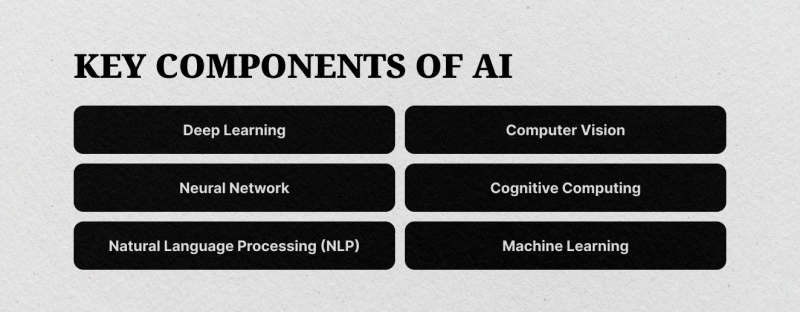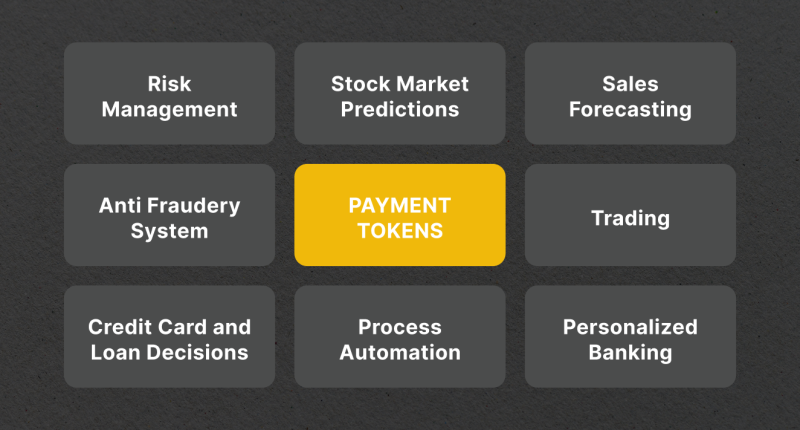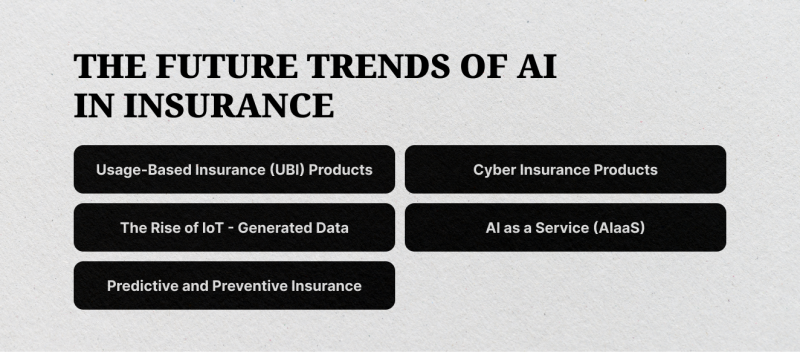AI in Finance: A Game-Changing Trend Shaping the Industry
Mar 05, 2025

AI is no longer just a futuristic concept — it’s a game-changer in finance, transforming how banks, investors, and businesses operate. From detecting fraud in real time to predicting market trends and automating customer interactions, AI is reshaping financial services to be smarter, faster, and more secure. As financial institutions embrace AI-driven innovations, they unlock new opportunities for growth, efficiency, and personalised customer experiences.
This article explores the key functions of AI in finance, the latest advancements, and the exciting future of AI-powered financial services.
Key Takeaways:
- AI is transforming financial processes by accelerating fraud prevention, automating trading, and improving customer service through chatbots and robo-advisors.
- Predictive analytics and machine learning help financial institutions make data-driven decisions, optimize investment strategies, and prevent financial risks.
- The future of AI in finance includes explainable AI, blockchain integration, and hyper-personalised banking experiences tailored to individual customer needs.
What is AI in the Financial Sector?
Artificial Intelligence (AI) in the financial sector refers to the use of advanced mathematical models, machine learning, natural language processing, and predictive analytics to enhance financial services, improve efficiency, and drive smarter decision-making.

AI enables financial institutions to automate processes, analyze vast amounts of data at unprecedented speeds, and provide more personalized services to customers. From fraud detection to risk assessment and algorithmic trading, AI has transformed traditional banking, investment, and insurance practices, making them more secure, efficient, and accessible.
Fast Fact:
AI-driven algorithmic trading accounts for over 60% of total market trades, revolutionizing the way stocks, commodities, and currencies are traded worldwide.
Key AI Technologies Used in Finance Services Industry
AI is revolutionizing the financial sector, reshaping traditional practices with cutting-edge technologies that drive efficiency, precision, security, and smarter decision-making. AI is at the heart of modern financial innovation, from automating processes to predicting market trends.
Here’s a closer look at the key AI technologies powering this transformation and how they are redefining the future of finance.
Machine Learning (ML) and Deep Learning
Machine Learning (ML) is a subset of AI that allows systems to learn from data, identify patterns, and make predictions without being explicitly programmed. ML is critical in credit scoring, fraud detection, and algorithmic trading in finance.
AI-driven credit scoring models analyze customer behavior, transaction history, and alternative data sources to assess an individual’s creditworthiness more accurately than traditional scoring systems.
ML algorithms are also widely used for fraud detection, identifying anomalies in real-time transactions and flagging potential fraudulent activities based on deviations from normal behavior.
In the investment world, hedge funds, banks, and financial institutions leverage ML-based algorithms for algorithmic trading, which analyzes financial market data and executes trades at optimal times to maximize returns.
Deep learning, a more advanced subset of ML, uses neural networks to process complex and unstructured data. This technology is beneficial in financial forecasting, fraud detection, and customer sentiment analysis, as it can process vast amounts of data and identify intricate patterns that traditional statistical models may overlook.
Natural Language Processing (NLP)
Natural Language Processing (NLP) enables AI systems to understand, interpret, and process human language, making it a valuable tool in the financial sector.
One major application of NLP is sentiment analysis, where AI-powered tools analyze news articles, earnings reports, and social media content to gauge investor sentiment and help traders make more informed decisions.
Another critical application of NLP is using AI-driven chatbots and virtual assistants in banking and financial services. These chatbots handle customer enquiries, assist with transactions, and provide financial advice, significantly improving efficiency and customer experience.
Similarly, NLP is widely utilized in regulatory compliance, or RegTech. It helps financial associations monitor regulations, scan documents for compliance risks, and generate reports to ensure adherence to legal requirements.
Predictive Analytics
Predictive analytics uses AI-driven statistical models and historical data to forecast future outcomes, making it an essential technology in finance. It is widely used for market trend forecasting, where AI models analyze past stock performance, economic indicators, and global events to predict market movements.
Predictive analytics also plays a crucial role in loan default prediction, helping banks assess the likelihood of a borrower defaulting on a loan and improving risk management strategies.
Another key application of predictive analytics is in customer behavior analysis. AI can predict customer preferences, spending patterns, and potential churn rates, enabling banks and financial providers to offer more tailored financial products.
Robotic Process Automation (RPA)
Robotic Process Automation (RPA) is an AI-driven technology that automates repetitive and rule-based tasks, significantly improving efficiency in finance.
One of its basic applications is transaction processing, where RPA automates routine banking tasks such as fund transfers, payment processing, and account reconciliation. This reduces manual work and minimises the risk of human errors.
RPA is also used for compliance and reporting, where AI-powered bots collect, analyze, and format financial reports to ensure regulatory compliance. This helps financial operators meet compliance requirements more accurately and efficiently. Besides that, RPA streamlines customer onboarding by automating identity verification, document submission, and KYC compliance.
By reducing manual intervention, RPA allows financial professionals to focus on more complex decision-making tasks, improving operational efficiency.
Computer Vision
Computer vision is an AI technology that enables machines to interpret and analyze visual information. In finance, it is commonly used for check and document verification, where AI-powered optical character recognition (OCR) scans and verifies handwritten checks, legal contracts, and identity documents to detect fraud and ensure compliance.
Another major application of computer vision is in ATM security and fraud prevention. AI-enhanced surveillance systems use facial recognition and behavioral analysis to detect and prevent fraudulent ATM withdrawals and unauthorized transactions.
More broadly, computer vision is used in real-time market data analysis, helping traders analyze charts, graphs, and visual market indicators to make better investment decisions. This technology enhances financial security, document processing, and customer authentication methods, reducing fraud risks and improving efficiency.
Explainable AI (XAI) and AI Ethics
As AI becomes more integrated into finance, ensuring transparency and accountability in AI-driven decisions is crucial. Explainable AI (XAI) addresses this challenge by making more interpretable and understandable AI decisions.
Financial agencies use XAI to improve regulatory compliance, ensuring banks can explain how AI models approve or deny loans to maintain fair lending practices.
Bias detection is another critical area in which XAI plays a role. AI tools analyze algorithms for potential biases in financial decision-making, ensuring equal opportunities for all customers.
Moreover, transparent AI models help build trust among customers, investors, and regulators by providing clear justifications for AI-driven financial recommendations.
Implementation of AI in Finance
AI is revolutionizing the financial sector, bringing unprecedented efficiency, security, and intelligence to the industry. It reshapes financial institutions’ operations by automating complex processes, refining decision-making, and personalising customer interactions. From fraud detection to predictive analytics, AI-driven innovations are streamlining operations and redefining the future of banking, investing, and insurance.

Here are the most impactful instances of AI in finance and how they drive transformation across the industry.
Algorithmic Trading
Algorithmic trading, or AI-powered trading or quantitative trading, uses machine learning and predictive analytics to analyze vast amounts of market data, identify profitable patterns, and execute trades at optimal times. AI-driven trading systems process real-time market signals, economic news, and historical stock performance to make rapid and precise trading decisions.
Unlike human traders, AI algorithms can execute thousands of trades within seconds, minimising human errors and taking advantage of real-time market fluctuations. Hedge funds, investment firms, and financial authorities rely on AI-driven trading strategies to maximize returns while reducing risks.
And finally, deep learning models enhance trading strategies by continuously learning from market behavior, improving decision-making over time.
Fraud Detection and Risk Management
AI has revolutionized fraud detection and risk assessment in the financial industry by enabling real-time monitoring of transactions and identifying suspicious activities.
Machine learning models analyze customer transaction patterns and flag unusual activities that may indicate fraudulent behavior, such as unauthorised transactions, identity theft, or money laundering.
Traditional fraud detection relied on rule-based systems that required constant updates. AI, on the other hand, continuously learns from new fraud cases, adapting to emerging threats. AI-driven fraud prevention systems use behavioral analysis to differentiate between legitimate and fraudulent transactions, reducing false positives and ensuring better security.
In risk management, AI-powered models assess financial risks by analyzing historical data, economic indicators, and geopolitical trends. Banks and financial institutions use AI to predict credit default risks, optimize loan approvals, and evaluate investment risks.
Client Service and AI Chatbots
AI-driven chatbots and virtual assistants are transforming customer service in banking and finance. These AI-powered tools handle customer inquiries, assist with transactions, and provide financial advice, significantly improving response times and efficiency.
Chatbots use NLP to understand customer queries and provide instant solutions without human intervention. They help customers check account balances, initiate fund transfers, inquire about loan eligibility, and receive personalised financial recommendations.
Some advanced AI assistants, such as those powered by Conversational AI, can even handle complex queries related to investment strategies and financial planning.
AI chatbots reduce operational costs for banks and enhance customer satisfaction by providing 24/7 support, eliminating long wait times, and ensuring seamless communication. With continued advancements in NLP, AI-powered chatbots are becoming more sophisticated, offering a human-like banking experience.
Personalized Financial Services and Robo-Advisors
AI is revolutionizing wealth management and financial planning by offering personalized investment recommendations through robo-advisors. Robo-advisors are AI-powered platforms that assess an individual’s financial goals, risk appetite, and market trends to offer automated investment guidance.
These AI-driven platforms analyze market data, investor behavior, and economic trends to offer tailored financial advice. Unlike traditional financial advisors, robo-advisors convey cost-effective, data-driven recommendations, making financial planning accessible to a broader audience.
Apart from that, AI is used in personalised banking, where financial firms inspect customer spending patterns to recommend suitable credit cards, insurance plans, and savings strategies.
AI-driven systems help customers optimize their financial health by suggesting budgeting strategies and detecting potential financial risks before they arise.
Credit Scoring and Loan Approvals
AI-driven credit scoring models have transformed the loan approval process, making it more accurate and inclusive. Traditional credit scoring relied heavily on credit history, often excluding individuals with limited financial records.
AI models, however, assess creditworthiness by analyzing alternative data sources such as transaction history, spending habits, utility bill payments, and even social media behavior.
AI-based credit risk assessment allows banks and financial enterprises to extend loans to individuals who may not have a strong credit history but demonstrate financial responsibility. This has significantly improved financial inclusion, particularly for small businesses, freelancers, and individuals in emerging markets.
Beyond that, AI automates the loan approval process by quickly analyzing applications, verifying documents, and assessing risks, reducing manual effort and speeding up decision-making. This has led to faster loan disbursements, benefiting financial institutions and customers.
Regulatory Compliance and Anti-Money Laundering (AML)
The financial industry is heavily regulated, and AI plays a crucial role in RegTech (Regulatory Technology) by helping institutions comply with complex regulations. AI-powered compliance solutions automate document analysis, detect suspicious operations, and ensure adherence to financial laws.
AI-driven anti-money laundering (AML) systems analyze real-time transaction data to identify patterns linked to illicit activities. By automating AML compliance checks, AI helps financial institutions prevent financial crimes while reducing regulatory penalties.
Machine learning models are also used to scan legal documents and contracts, ensuring financial institutions remain compliant with changing laws. AI-powered compliance solutions improve efficiency by reducing the time and resources required for manual audits and risk assessments.
Predictive Analytics for Market Forecasting
AI-powered predictive analytics helps financial institutions anticipate market trends, economic shifts, and customer behavior. AI models generate insights that guide investment strategies and business decisions by analyzing historical financial data, global economic indicators, and news reports.
Investment firms use AI-driven predictive models to forecast stock performance, optimize asset allocation, and assess portfolio risks. AI helps traders make data-driven investment decisions, reducing the uncertainty associated with market fluctuations.
Banks also use predictive analytics to analyze customer behavior patterns, allowing them to offer customized financial products and identify potential loan defaults before they occur. AI-driven financial forecasting enhances proactive decision-making and reduces risks associated with market volatility.
AI in Insurance (InsurTech)
AI is amending the insurance industry by automating claims processing, detecting fraudulent claims, and personalising insurance policies. AI-driven underwriting models assess policyholder risk based on medical history, driving behavior, and financial stability.

In claims processing, AI-powered chatbots and automated systems analyze claim submissions, verify documents, and determine eligibility, reducing the time required for claim settlements. Insurers also use computer vision technology to analyze images from accidents and assess damages, expediting the claims’ approval process.
Further, AI enables dynamic pricing models, where insurance companies adjust real-time policy premiums based on customer behavior. For example, telematics-based car insurance uses AI to track driving habits, rewarding safe drivers with lower premiums. These AI-driven innovations improve efficiency and provide more customised insurance solutions for customers.
Future Trends of AI in Finance
AI remains to morph, and its positive effect on the financial sector will expand further, driving efficiency, security, and innovation. Emerging technologies and complex AI applications are poised to redefine financial services, making them more intelligent, adaptive, and accessible.
Below are some of AI’s most promising future trends in finance and how they will shape the industry in the coming years.
Explainable AI (XAI) and Transparency
Financial bodies are demanding greater transparency in AI-driven decisions. Explainable AI (XAI) ensures that credit approvals, investment recommendations, and fraud detection are interpretable and fair. This will help reduce biases, improve compliance, and build consumer trust.
Hyper-Personalization in Banking
AI is shifting banking from generic services to personalised financial experiences. AI will customise savings plans, investment portfolios, and spending insights by analyzing customer behavior and enhancing engagement and loyalty. Chatbots and virtual assistants will evolve to proactively guide users in financial planning.
AI in DeFi and Blockchain
AI-powered smart contracts and risk assessment models will optimize DeFi transactions, ensuring greater security and transparency. AI will also enhance crypto trading strategies and fraud detection, strengthening blockchain-based financial ecosystems.
AI-Driven Predictive Analytics
Advanced AI models will improve market forecasting, detect economic downturns, and optimize investment strategies. AI-driven sentiment analysis will provide real-time insights from financial reports and global news, helping investors make deliberate decisions.
Fraud Detection and Cybersecurity
AI will enhance fraud prevention through behavioral biometrics, anomaly detection, and AI-driven risk intelligence. Multi-factor authentication and biometric security protect financial data from identity theft, phishing, and cyber threats.
AI and Quantum Computing
Quantum computing will revolutionize financial modelling, risk analysis, and high-frequency trading by processing massive datasets at unprecedented speeds. This will improve credit risk evaluation, fraud oversight, and portfolio optimization.
AI in Regulatory Compliance (RegTech)
AI-powered RegTech solutions will automate compliance monitoring, detect regulatory risks, and prevent financial crimes like money laundering (AML). AI-driven audits will reduce manual efforts, improving regulatory efficiency.
Embedded Finance and Smart Payments
AI will seamlessly integrate financial services into non-financial platforms, enhancing instant payments, automated lending, and AI-driven credit risk assessments. Biometric authentication and real-time fraud detection will improve payment security.
AI in Sustainable Finance (Green Finance)
AI will assess ESG risks, track carbon footprints, and optimize climate-friendly investments. Banks and asset managers will leverage AI to prioritize eco-friendly portfolios and support sustainability initiatives.
Conclusion
AI is not just a technological upgrade — it’s a revolution in the financial world. As AI evolves, it will drive hyper-personalised banking, smarter investment strategies, and stronger fraud protection, creating a more prosperous and robust financial landscape.
The institutions that adapt and integrate AI effectively will lead the future of finance, while those that lag risk falling behind. The key lies in ethical AI adoption, transparency, and leveraging AI’s full potential to contribute to user experience and financial integrity.
FAQ:
How is AI improving fraud detection in finance?
AI uses machine learning and behavioral analysis to detect real-time illicit activities. It learns from past fraud patterns, making fraud detection more accurate and proactive.
Will AI replace human financial advisors?
While AI-powered robo-advisors present cost-effective and data-driven investment advice, human financial advisors remain essential for complex decision-making and personalised guidance.
What is Explainable AI (XAI) in finance?
XAI ensures transparency in AI-driven financial decisions, making it easier for institutions to explain loan approvals, investment recommendations, and fraud detection processes.
How will AI impact the future of banking?
AI will lead to hyper-personalised banking, smarter risk management, faster transactions, and seamless automation—making banking more secure, efficient, and customer-centric.




